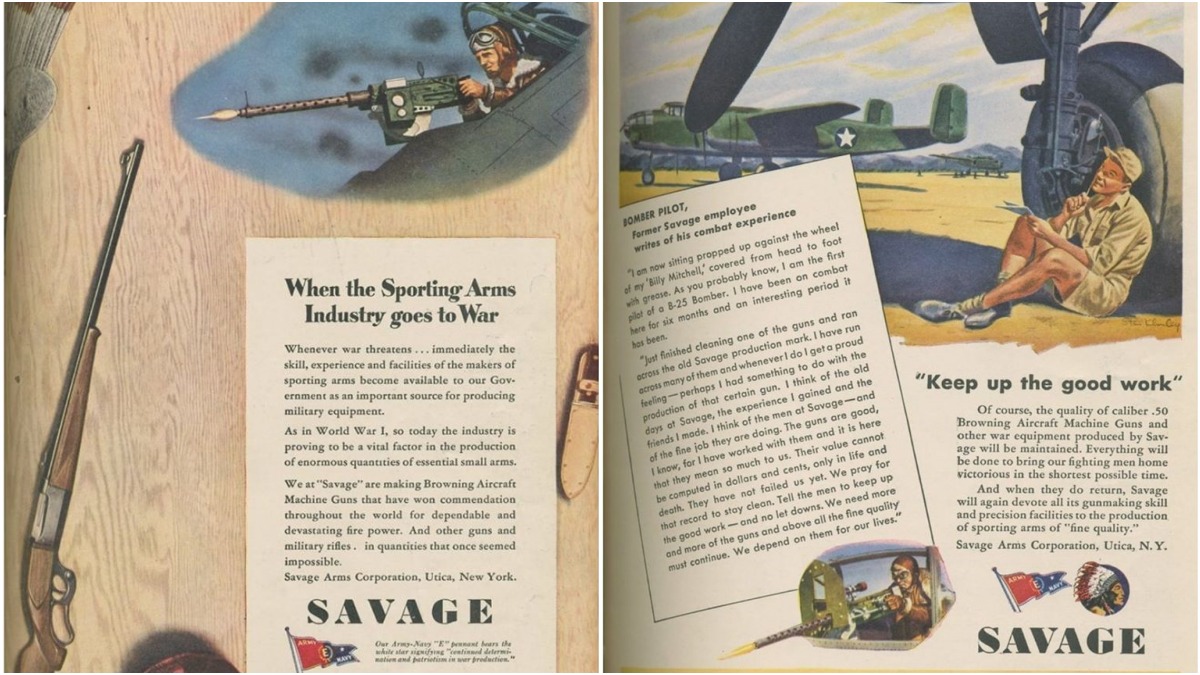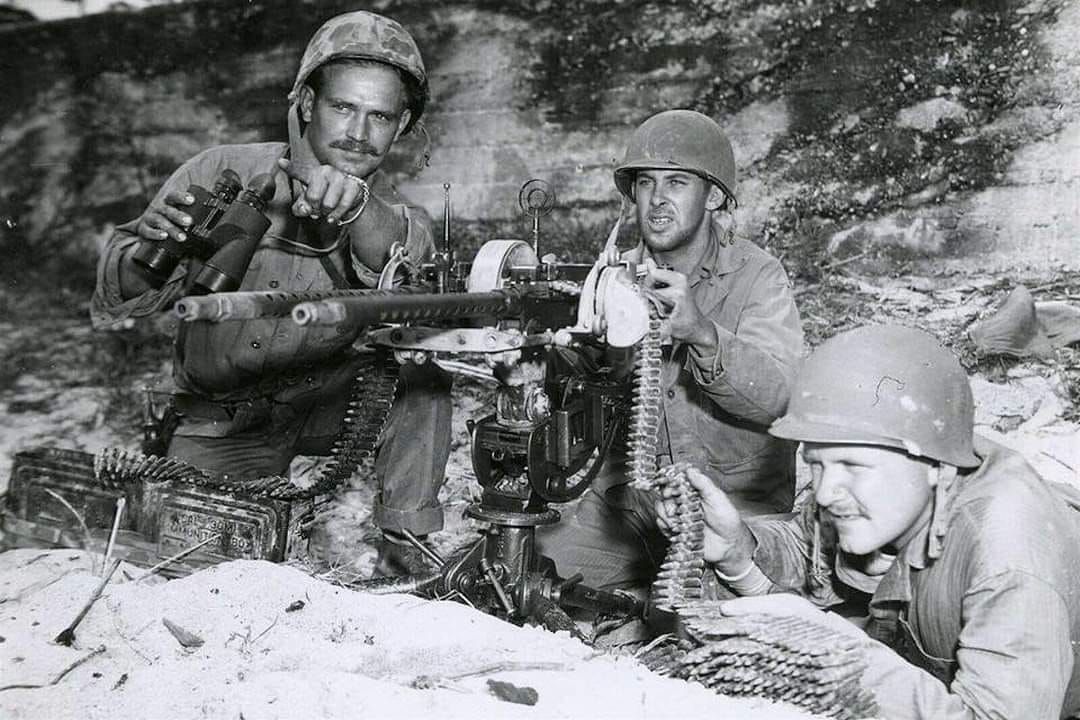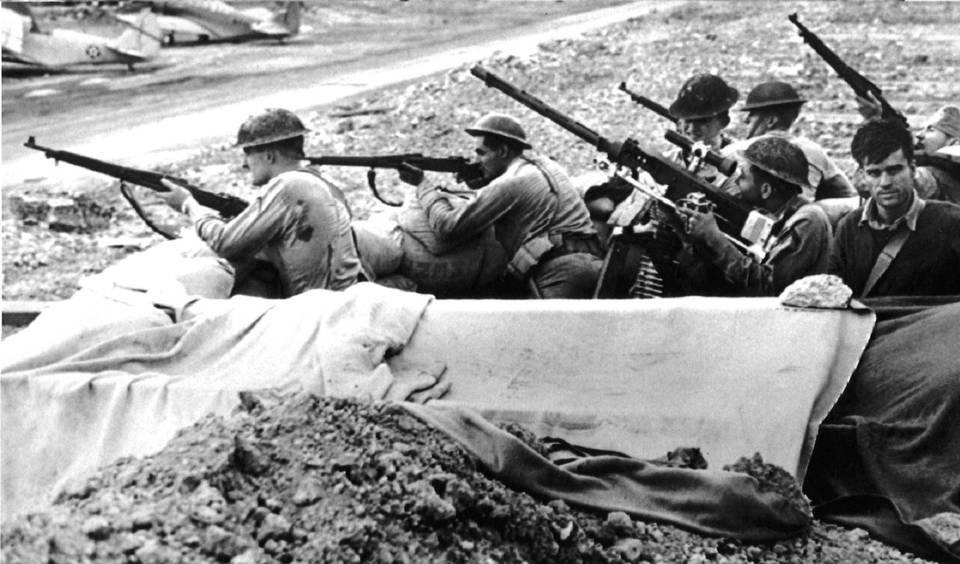Boresighting a Browning, and looking Cool While you Do it
80 years ago today. Official caption: “Aviation Free Gunnery Unit, Barber’s Point, Hawaii. Shown: Bore Sighting Stand, August 18, 1943.”
The machine gun on the stand seems to be an ANM2, a 30-06 chambered version of the M1919 Browning machine gun meant for aircraft use and with a wicked rate of fire that could touch 1,500 rpms.
Twin .30-cal ANM2s were mounted in the rear seats of Dauntless and Helldiver dive bombers, Avenger torpedo bombers, and in the blisters of the PBY-5 Catalina.

The rear ANM2 mount on the famed SBD dive bomber, seen here on a preserved aircraft at the Pima Air and Space Museum in Arizona (Photo: Chris Eger)

The ANM2 was also used in side blister mounts on the big PBY Catalina flying boat, here seen in a period Kodachrome image. (Photo: U.S. Navy/National Archives)

Interestingly, Savage made thousands of ANM2s during the war, taking a break from their regular commercial rifle production.
They were also pressed into service by Marines on the ground. One notable image from the attack on Pearl Harbor shows Marines on Ford Island using an ANM2, likely borrowed from a Navy PBY, set up to take shots at incoming Japanese planes.
Other images show Marines on Okinawa with a full twin mount, likely plucked right from a wrecked Helldiver or SBD, used for defense in a ground attack role.

It seems to be placed on the tripod for a Browning M1917 water-cooled machine gun. Note the high anti-aircraft sights. (Photo: U.S. Navy/National Archives)
It was little wonder that some Marines took these super-rapid machine guns and fitted them with stocks, triggers, and bipods to make so-called “Stinger” LMGs. See Medal of Honor recipient, Marine Corporal Tony Stein for more information on that.

